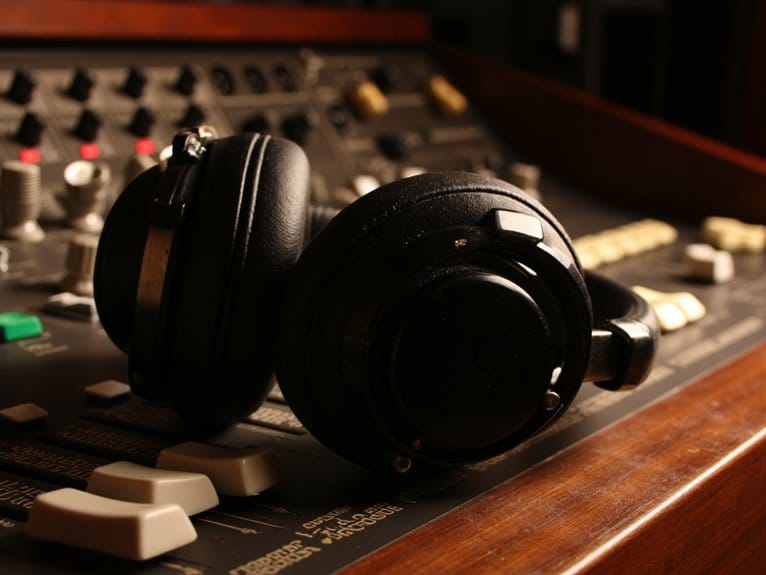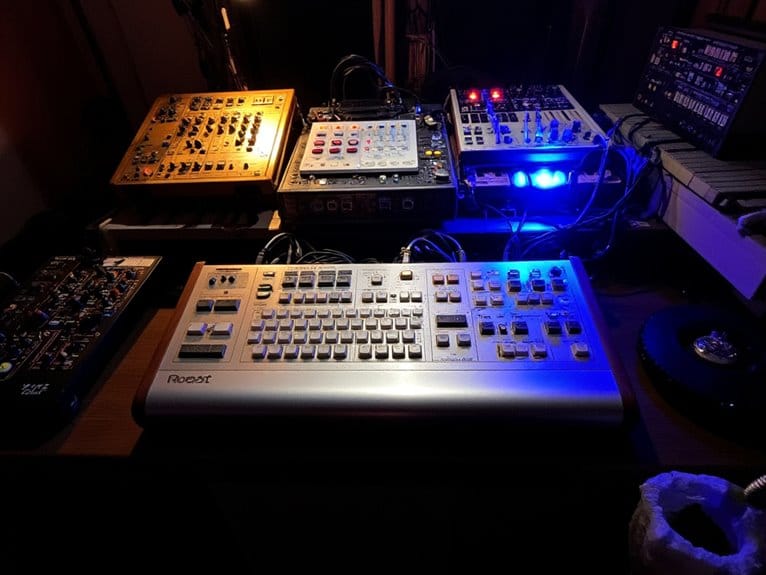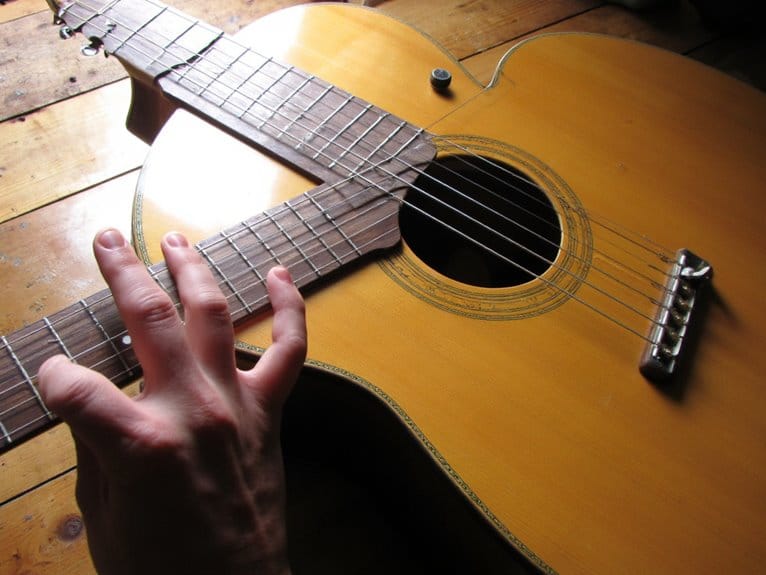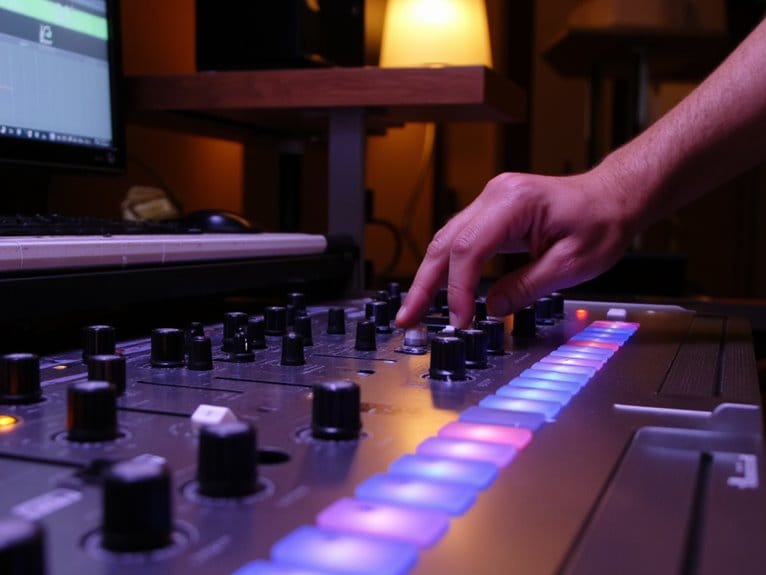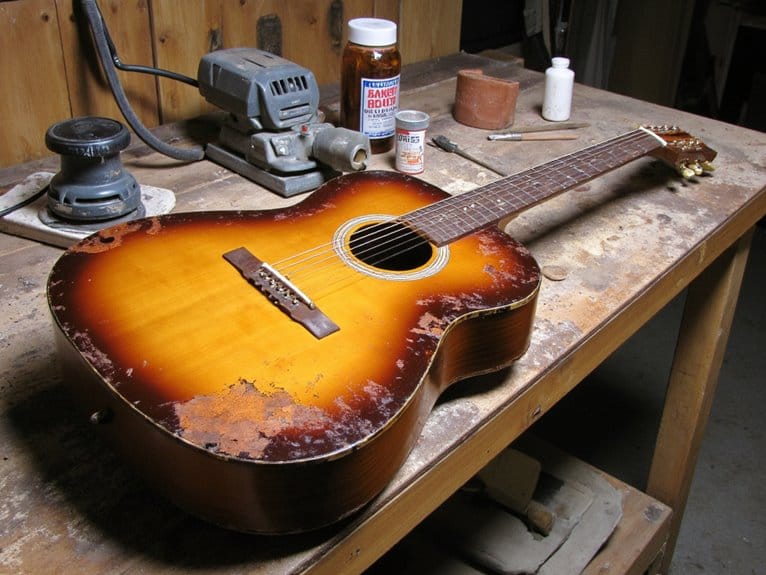How Headphones Affect Your Mixing Decisions
Headphones distort your mixing decisions through exaggerated stereo separation that makes tracks seem wider than they’ll sound on speakers, while the close proximity of drivers creates unreliable bass perception and missing physical vibrations that lead to poor low-end choices. You’ll experience accelerated ear fatigue during extended sessions, causing frequency desensitization and the temptation to boost elements unnecessarily. The isolated environment eliminates natural room reflections and crossfeed, compromising spatial context and real-world translation, though specific techniques can minimize these mixing pitfalls.
We are supported by our audience. When you purchase through links on our site, we may earn an affiliate commission, at no extra cost for you. Learn more.
Notable Insights
- Headphones create hyper-stereo effects and undefined phantom center, leading to poor spatial mixing decisions and unnatural stereo width.
- Close driver proximity causes bass perception issues, resulting in muddy mixes from over-compensation or thin low-end from under-compensation.
- Extended headphone sessions cause ear fatigue and frequency desensitization, compromising mixing accuracy and encouraging unnecessary frequency boosting.
- Isolated monitoring environment lacks natural reflections and three-dimensional soundstage, weakening real-world mix translation understanding.
- Headphone-specific frequency responses create equipment-dependent mixing habits that don’t translate well across different playback systems.
The Exaggerated Stereo Field: How Headphones Warp Spatial Perception
While speakers naturally blend audio signals through room acoustics and crossfeed, headphones create an artificially isolated stereo environment that can dramatically distort your perception of spatial width during mixing sessions.
This isolation causes what I call the “hyper-stereo” effect, where sounds appear to move far beyond their intended placement, making your mix seem wider than it actually is.
The phantom center becomes less defined without natural crossfeed, compromising spatial coherence across your entire stereo field.
Modern imaging tools and mixing trends that emphasize stereo width become exaggerated on headphones, leading to decisions that don’t translate well to speakers. Closed-back headphones excel in professional monitoring applications but can further intensify this artificial stereo separation due to their exceptional sound isolation capabilities.
You’ll find yourself creating mixes that sound disjointed when played back on conventional speaker systems. The absence of ITD and ILD mechanisms in headphones eliminates the natural timing and volume differences between ears that our brain uses for accurate spatial positioning.
This is why many audio engineers prefer open-back headphones that provide a more transparent and spacious sound ideal for accurate mix decisions.
Crossfeed plugins can help restore more natural spatial accuracy by simulating the subtle bleed between left and right channels that occurs in real-world listening environments.
Bass Misjudgment: Why Low-End Balance Suffers in Headphone Mixes
When you’re mixing on headphones, you’ll quickly discover that bass frequencies can fool you in ways that’ll make your final mix sound completely wrong on other systems.
This happens because headphone drivers sit so close to your ears that they create frequency response inconsistencies you simply can’t experience through speakers. The missing physical vibrations that naturally occur when bass moves through air and into your body mean you’re fundamentally flying blind when making low-end decisions.
Since you can’t feel those vital sub-frequencies that help determine whether your kick drum has enough punch or your bassline sits properly in the mix.
Professional headphones with extended frequency response up to 40 kHz can provide enhanced dynamic richness for more accurate monitoring, though the fundamental bass perception challenges remain. Effective noise isolation becomes crucial during these critical mixing decisions, as external distractions can further compromise your ability to hear bass frequencies accurately.
Fortunately, there are bass enhancement solutions, from calibration software to tactile transducers, that can help bridge this gap and give you more accurate low-frequency monitoring when speakers aren’t an option.
Frequency Response Inconsistencies
The fundamental challenge with headphone mixing lies in the wild inconsistencies of bass frequency response across different models, a problem that’s plagued audio engineers since the dawn of personal monitoring.
When you’re working with headphones that exhibit uneven frequency response, you’re fundamentally mixing blind in the low frequencies, making critical decisions based on unreliable information.
The consequence of this inconsistency creates three major mixing pitfalls:
- Over-compensating for weak bass – leading to boomy, muddy mixes on speakers
- Under-estimating enhanced bass – resulting in thin, powerless low-end translation
- Developing equipment-specific habits – compromising your mixing accuracy across different playback systems
Without standardized bass reproduction, you’ll find yourself constantly second-guessing low-end decisions, ultimately undermining the confidence and precision that professional mixing demands.
Missing Physical Vibrations
Beyond these frequency response problems lies an even more fundamental issue that I’ve watched trip up countless engineers over the years-headphones completely eliminate the physical sensation of bass that your body naturally expects when making low-end decisions.
When you’re monitoring through speakers, your chest, torso, and even your studio furniture become part of the sensory engagement process, providing vital tactile feedback that informs your mixing choices. This virtual vs. physical disconnect means you’re fundamentally flying blind in the sub-40 Hz range, where physical vibrations matter most.
I’ve seen engineers consistently over-boost low frequencies because they can’t feel what they’re hearing, resulting in mixes that sound bloated and muddy when played back on speaker systems that properly translate those physical vibrations to listeners.
Bass Enhancement Solutions
Fortunately, I’ve discovered that bass enhancement solutions can dramatically improve your low-end decision-making when you’re stuck mixing on headphones, fundamentally bridging the gap between what you hear and what actually translates to speaker systems.
These algorithms boost low frequencies during monitoring, which surprisingly makes you dial down bass levels, creating more accurate mixes for club playback.
Here’s what these solutions deliver for your workflow:
- Visual EQ targeting through specialized plugins like BASSROOM that provide real-time frequency analysis alongside enhanced bass perception
- Crossfeed simulation that blends stereo channels, mimicking speaker conditions while reducing the isolation effect of headphone design
- Reference matching capabilities that help you align your bass decisions with known, professionally-mixed tracks across different playback systems
Ear Fatigue: The Hidden Enemy of Accurate Mix Decisions
Invisible saboteur that it is, ear fatigue creeps into every extended headphone mixing session, gradually undermining your ability to make accurate sonic decisions without you even realizing it’s happening.
Your ears become progressively desensitized to certain frequencies, particularly harsh highs and muddy mids, which tempts you to overcompensate by boosting these ranges unnecessarily.
The close proximity of headphone drivers to your ear canal intensifies sound exposure compared to studio monitors, accelerating auditory exhaustion and compromising your audio sensitivity.
Without proper ear recovery breaks every 45-60 minutes, you’ll find yourself gradually raising volume levels to regain clarity, creating a destructive cycle that further diminishes your mixing accuracy and risks long-term hearing damage.
Room Acoustics vs. Isolation: Missing the Real-World Playback Experience
While headphones excel at delivering pristine isolation that eliminates room interference and allows you to hear every subtle detail in your mix, this very strength becomes a critical weakness when it comes to understanding how your music will actually sound in the real world.
Real world comparisons reveal significant headphone limitations that impact your mixing decisions:
- Spatial disconnection – Your mix lacks exposure to natural room reflections and reverberation that affect playback in homes, cars, and public spaces.
- Bass perception gaps – Especially with open-back headphones, you’ll underestimate or overcompensate low frequencies since you’re missing physical bass impact.
- Stereo field distortion – Hard-panned elements sound disconnected rather than integrated, creating mixes that translate poorly on speakers.
This isolation prevents you from experiencing how acoustic environments naturally shape music perception. Professional studio monitors like the Sony MDR7506 with their flat frequency response help minimize coloration, but even the most accurate headphones can’t replicate the three-dimensional soundstage and room interaction that speakers provide.
Best Practices: Strategies for Reliable Headphone Mixing
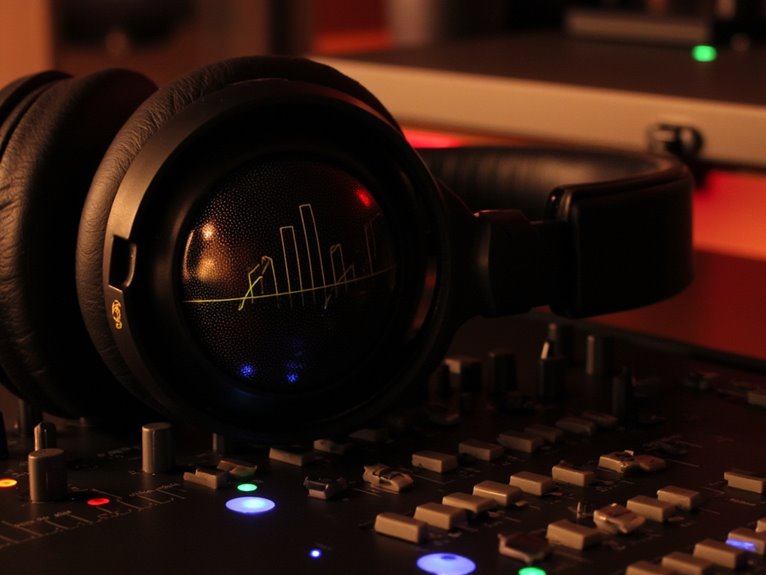
Everyone knows that mixing on headphones isn’t ideal, but when you’re stuck with cans instead of monitors, certain strategies can dramatically improve your results if you’re willing to adapt your workflow.
Smart reference track selection becomes your mixing compass, providing reliable benchmarks for frequency balance and stereo imaging that translate across different playback systems. I’ve learned that comparing your mix elements against professionally produced tracks in similar genres reveals tonal imbalances that headphones might otherwise mask.
Here are three essential practices I recommend:
- Use crossfeed plugins to simulate natural speaker crosstalk and reduce exaggerated stereo separation.
- Take regular breaks every 30-45 minutes to combat ear fatigue and maintain objective judgment.
- Monitor at moderate levels consistently, as loud headphone mixing destroys your frequency perception faster than you’d expect.
Frequently Asked Questions
How Do Open-Back Versus Closed-Back Headphones Affect Mixing Decisions Differently?
Open-back headphones give you more natural frequency response and spacious soundstage for accurate mixing, while closed-back designs provide sound isolation but can color your decisions with emphasized bass and confined spatial perception.
What Headphone Volume Levels Should I Use for Optimal Mixing Accuracy?
You should mix at 75-85 dB SPL for ideal accuracy. This level prevents ear fatigue while preserving mixing dynamics perception. Consider your headphone impedance when setting levels, as higher impedance models may require more amplification to reach proper monitoring volumes.
On a final note
You’ll never achieve perfect mixes using only headphones, but you don’t have to abandon them entirely. I’ve learned that understanding their limitations, using proper calibration tools, and cross-referencing with speakers creates a workable system. Your ears will thank you for taking breaks, and your mixes will sound more balanced across different playback systems when you acknowledge headphones’ inherent spatial distortions and bass response issues.

